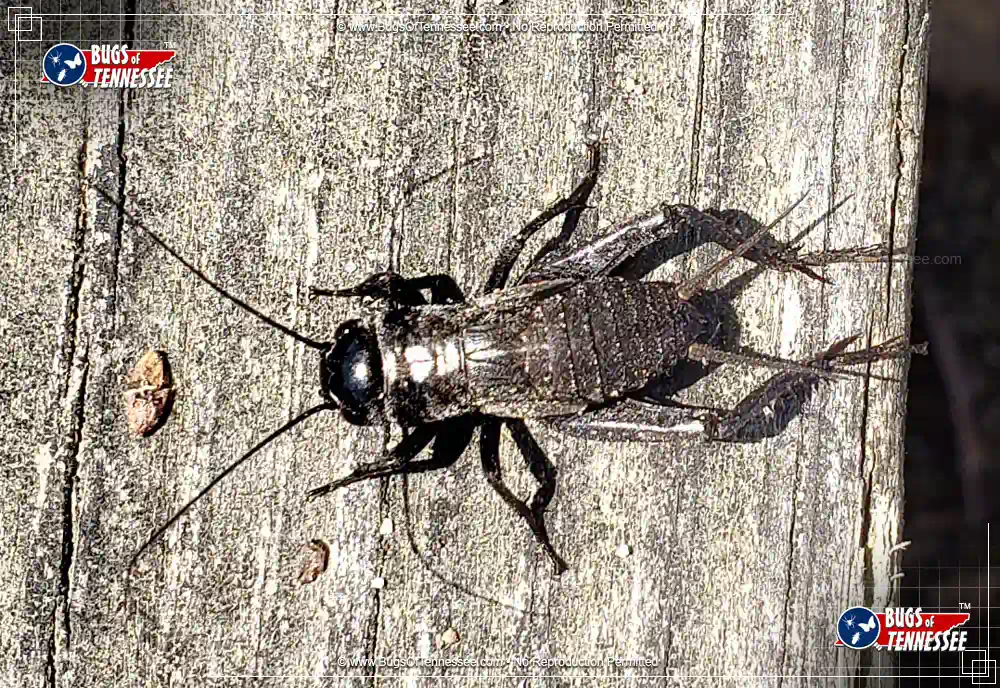Insect Order (Orthoptera)
ORTHOPTERA
The order Orthoptera includes Grasshoppers, Crickets, and Katydids with over 20,000 species recorded to date. Approximately 1,200 of these reside across North Amerca making them a relatively common site, particularly in Tennessee. They are mainly recognized for their unique rear legs which allow them to 'hop' but also have four wings (forewings and hindwings). Their mouthparts are designed for chewing plant fibers (though some do feast on deceased insects). Grasshoppers and the related Locust can be identified through their thicker antenna whereas Crickets and Katydids have thinner antennae. Orthopteras are notable in outdoor environments but may find their way into human dwellings on occassion.
Taxonomy
Other Names: "Fall Field Cricket"
The Taxonomic Breakdown is the scientific way to categorize a partocular insect species from its largest group (Animalia) to its smallest (variable). The Genus and Species categorizations taken together make up the species' scientific name shown above, in this case Gryllus spp..
Kingdom: Animalia
Phylum: Arthropoda
Class: Insecta
Order: Orthoptera
Family: Gryllidae
Genus: Gryllus
Species: spp.
Characteristics
Antenna: Antenna are noticeably apparent on this insect.
Indoors: Can be found indoors; inside dwellings.
Outdoors: Typically found across the great outdoors.
Six-Legged: Six legs are common to this insect.
Description
The Field Cricket is also known by these other names:
Fall Field Cricket
The Field Cricket has been identified by site users by the following descriptors:
large six-legged outdoors jumping leaping noise noisy antenna hind legs summer black grey gray red brown maroon garden indoors outdoors
Sighting Guide
The general likelihood of encountering this insect based on a given month of the year in the state of Tennessee. Generally, the best sighting months are June through August with peak occurring in July.
Size
Below is a representation of the 'smallest-small' and 'largest-large' sizes commonly associated with the Field Cricket. Due to monitor differences, sizes may not be exact on your particular screen. Conversions to millimeters are provided for convenience.
Lowest-Low:
0.59 inches
(15 mm)
Highest-High:
0.98 inches
(25 mm)
Identifying Colors
Below you will find the colors most commonly associated with the Field Cricket. Both Primary and Secondary colors are represented in the showcase. Due to monitor differences, colors may not be exact representations.
Tennessee County Reach
The Field Cricket can be found in the following Tennessee counties:
Anderson; Bedford; Benton; Bledsoe; Blount; Bradley; Campbell; Cannon; Carroll; Carter; Cheatham; Chester; Claiborne; Clay; Cocke; Coffee; Crockett; Cumberland; Davidson; De Kalb; Decatur; Dickson; Dyer; Fayette; Fentress; Franklin; Gibson; Giles; Grainger; Greene; Grundy; Hamblen; Hamilton; Hancock; Hardeman; Hardin; Hawkins; Haywood; Henderson; Henry; Hickman; Houston; Humphreys; Jackson; Jefferson; Johnson; Knox; Lake; Lauderdale; Lawrence; Lewis; Lincoln; Loudon; Macon; Madison; Marion; Marshall; Maury; McMinn; McNairy; Meigs; Monroe; Montgomery; Moore; Morgan; Obion; Overton; Perry; Pickett; Polk; Putnam; Rhea; Roane; Robertson; Rutherford; Scott; Sequatchie; Sevier; Shelby; Smith; Stewart; Sullivan; Sumner; Tipton; Trousdale; Unicoi; Union; Van Buren; Warren; Washington; Wayne; Weakley; White; Williamson; Wilson
Field Cricket Picture (1)
1 of 1

Image of an adult Field Cricket jumping insect at rest showing detail.; Credit: Julie R. of Franklin, TN.
This image is original to
www.InsectIdentification.org; Used with Permission.
